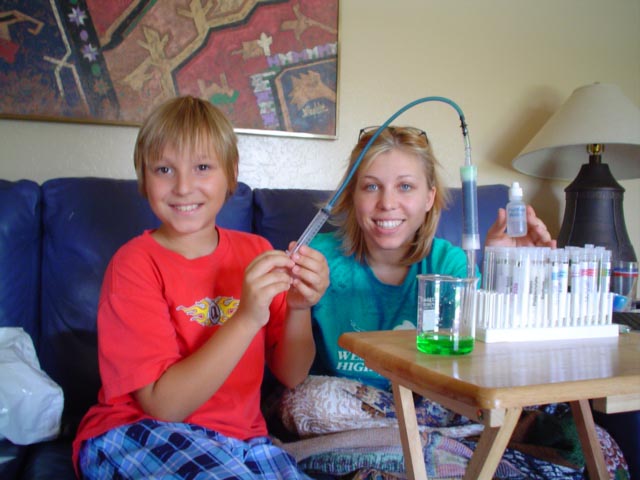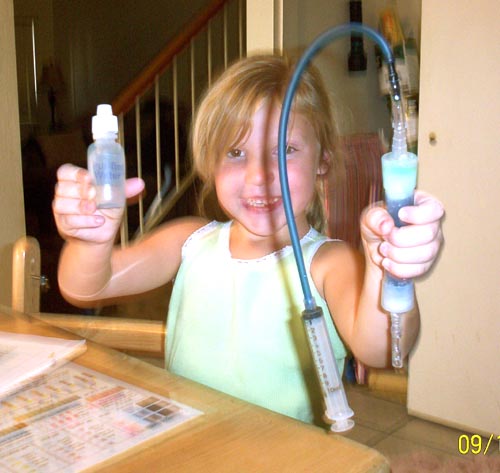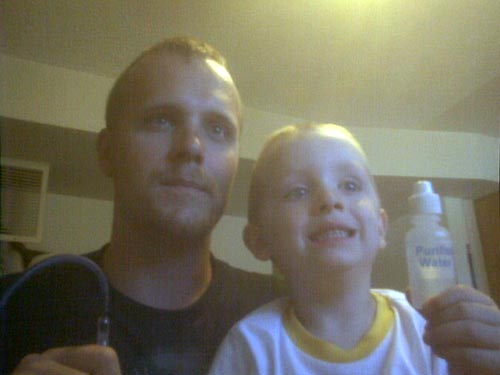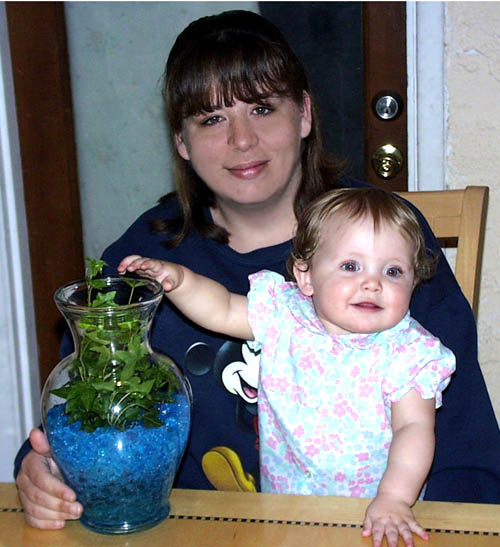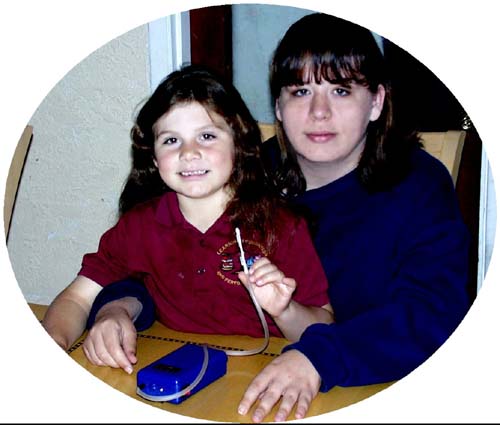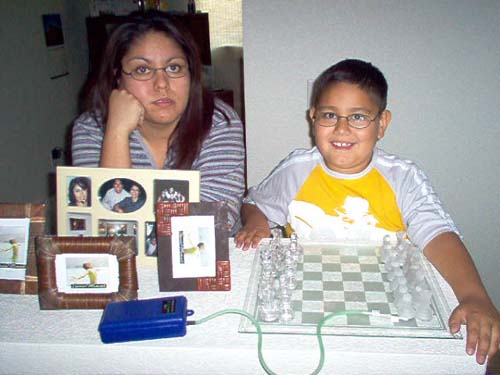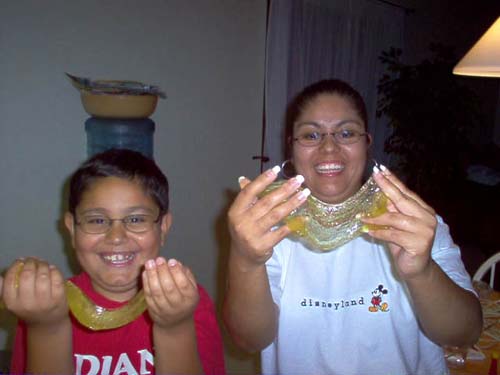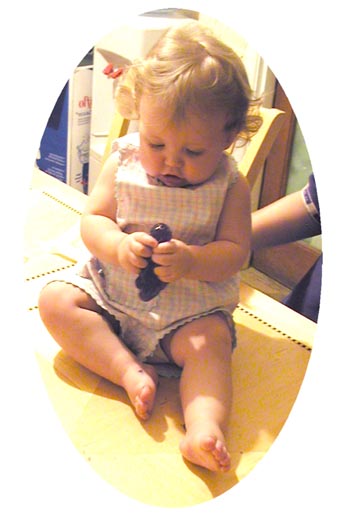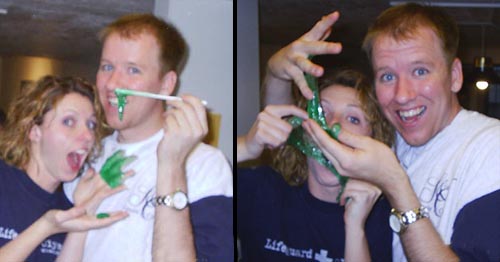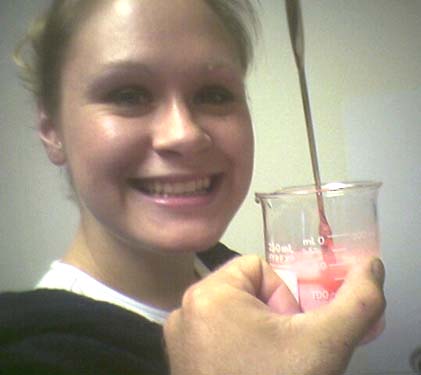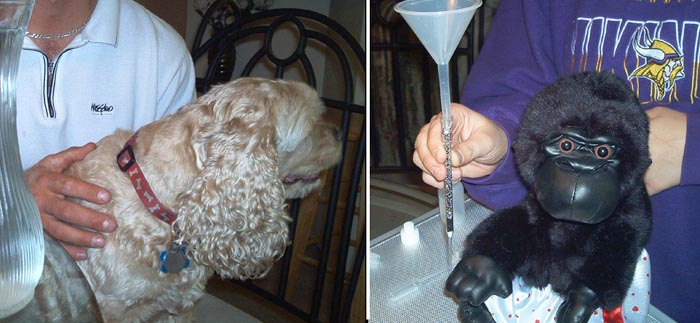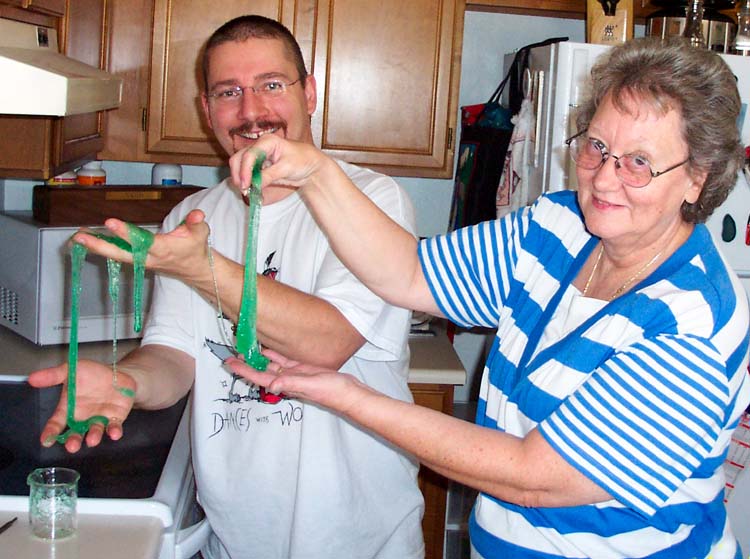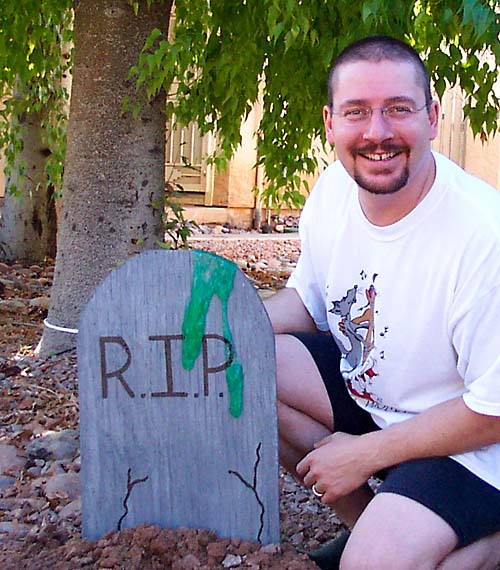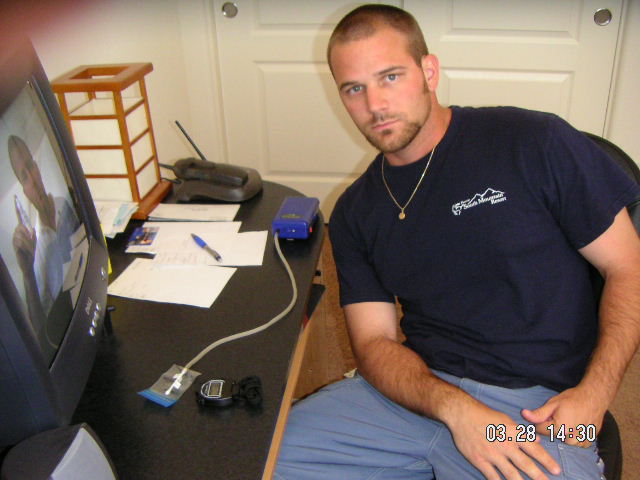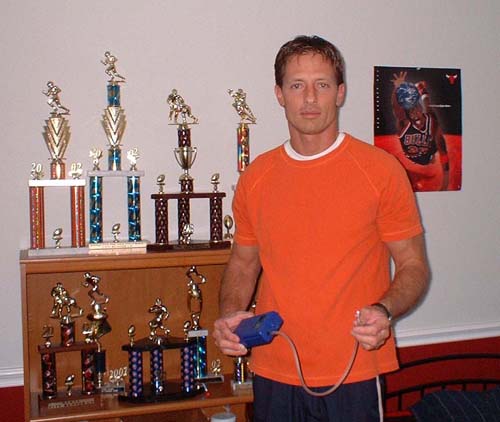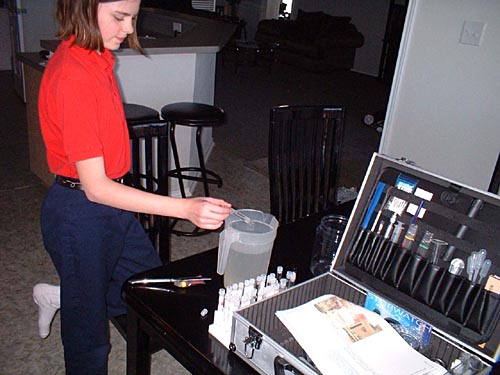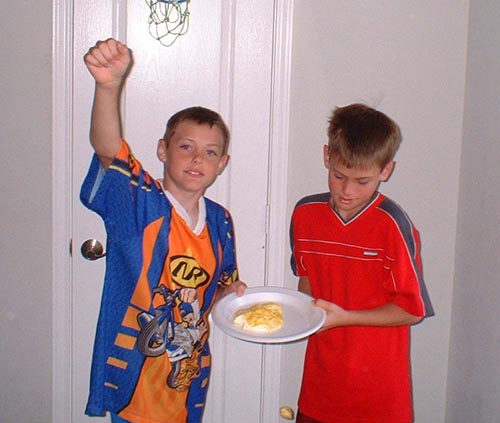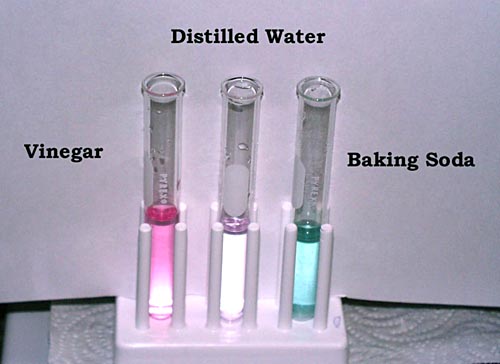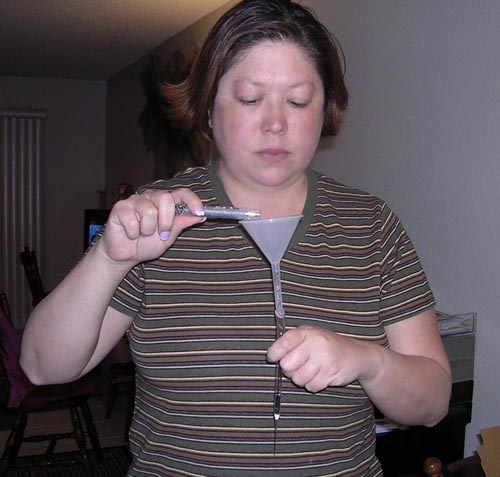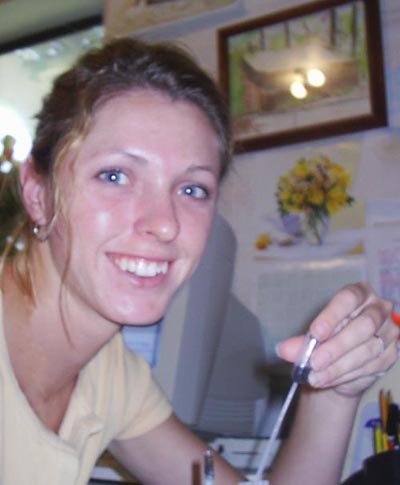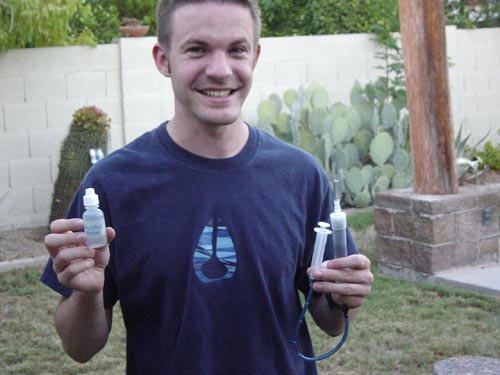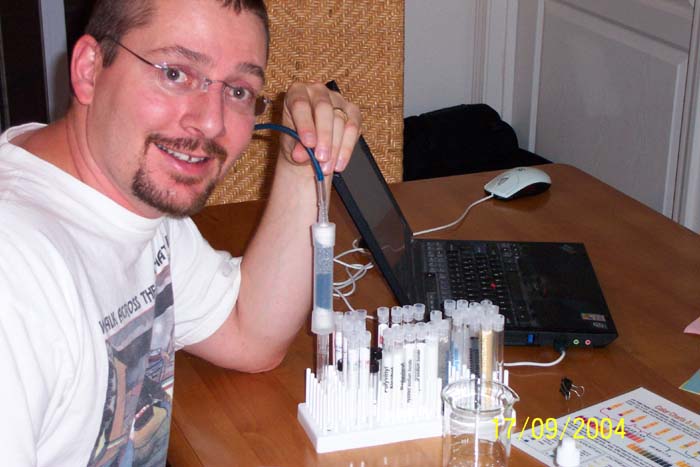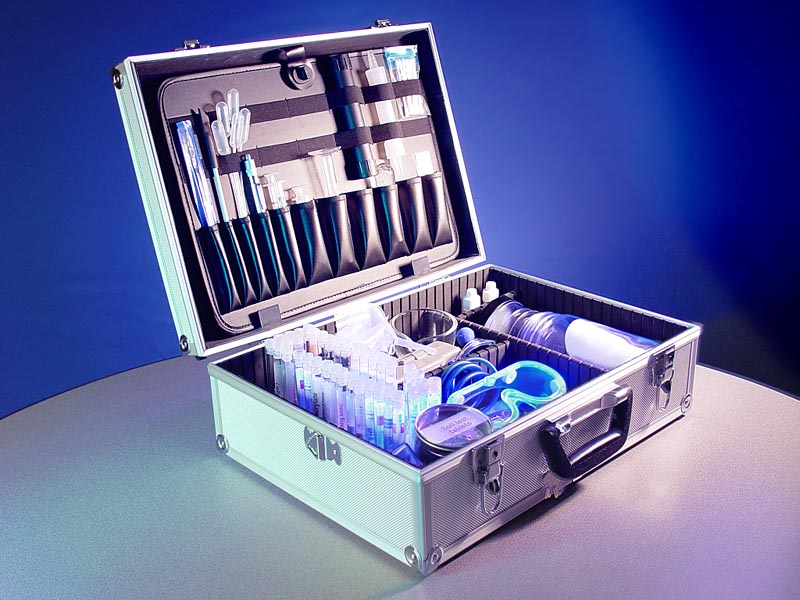|
VERY YOUNG SCIENTISTS:
The children and young siblings of the CHM107 students often help with
the labs.
|
| In the below picture, Marie gets help from
her younger brother, Thomas. They are performing the first lab where they
build a water purifying column and show that it removes dissolved minerals
and other types of pollutants. |
|
|
|
|
On the left is the 5 year old
daughter of Melissa (another current student) who is also helping with the
first lab. Children get curious when water goes in colored and comes out
clear. |
|
|
Also just finishing the first lab is Kevin (nickname "Curly")
with his son.
I think it's great that the portable chemistry lab allows
parents to spend more time with their children, and that time can be enjoyed
learning something.
|
|
|
The youngest lab partner I've seen so far has been Makayla,
the cute 10 month old daughter of Tonya. They had just hydrated a plant
gel known as sodium polyacrylate in a vase, and placed a plant into the
polymer-based soil substitute (Lab 7).
|
|
|
Envious of the pretty blue crystals is Tonya's pet lizard,
Romeo.
|
|
|
In Lab #2-part 1, Tonya gets help from her
oldest daughter, Katina. The portable air pump is pushing air into a filter
that is capturing particulates in the air. The filters are mailed to the
college, where I take digital pictures through a microscope and share the
images with the students. |
|
|
In the same experiment, Claudia is getting
bored waiting for the 20 minutes of air sampling, but her son is having
fun anyway. |
|
|
Later in Lab #7, Experiment 1, Claudia also
has fun when she and her son synthesize slime. |
|
|
You might have guessed that Tonya's
daughter, Makayla, would find slime interesting, too. |
|
|
Not just kids like to make slime.
Alyssa and her new husband, Steve, couldn't help but see the funny possibilities. |
|
|
Spouses of students enjoy the labs, too. This
is Sam, even though he was not taking the course, he was always there helping
Melissa (a different Melissa than named earlier) with the experiments. In
one lab, he got to be in front of the camera. |
|
|
Here is Melissa. In every photo she sent me, she was smiling.
I just knew she and Sam were having fun doing the labs together. In this
picture, it looks like Sam was holding the beaker while Melissa did the
stirring.
Below you see Melissa and Sam letting their pet dog and
pet stuffed gorilla observe the experiments.
|
|
|
| Lonnie (on the left) got some help from a family
friend, Noreen, in doing the slime experiment. I'm sure Noreen has done
a lot of cooking, but this might be the first time she had to cook up some
slime. |
|
|
|
|
Lonnie had a great idea in using his slime to dress up
the neighbor's Halloween prop. I'd say his slime is definitely Hollywood
quality. |
| Not everyone takes a fun-hearted approach to
the labs. Brock realized that these labs could be used for serious investigations. |
|
|
|
|
Heath took the air sampling experiment seriously,
also. His 10 year old son, Hunter, has suffered from allergies, which jeopardized
his participation in sports (notice Hunter's trophies). This experiment
may reveal the particulates responsible for the allergies. |
|
|
This is Heath's 12 year old daughter, Marissa. She takes
science seriously, too. The previous year, she won first place in a science
fair, and her goal is a career in science - probably veterinary science.
She's helping with the artificial polymer soil experiment.
They used a tomato plant that was later transplanted to outside soil and
is now giving them tomatoes to eat.
|
|
|
Heath's son, Hunter, is giving the power of
slime sign. Actually, they used an alternative recipe which produces more
of a silly putty product. Heath's other son, Ryan, is checking it out. |
|
|
Even though Tonya often involved her daughters
in the experiments, she took it rather seriously because her goals for chemistry
went farther than CHM107. |
|
|
You could also tell Tonya was serious about
the labs because her photos of the lab were always good. Here she even printed
labels to help show what chemical was producing the color change. This is
in lab 1, part 2 where students extract red cabbage pigment to use as a
pH indicator. |
|
|
This is Lisa. She was always conscientious
with the labs. The pictures she sent never showed she was overjoyed, but
after the course was over, she asked if I had more labs to give her, because
she and her children enjoyed doing them so much. |
|
|
Claudia started taking the kit more serious
when she detected high nitrate levels (close to going over EPA's limit)
in her tap water. Nitrate is often found in agricultural areas where nitrates
from fertilizer and animal waste gets leached down to the water table. She
lives is Gilbert and gets water from the Gilbert Water Company. Further
testing by other chemistry students in the area confirmed higher nitrate
levels than other parts of the valley. EPA's website also listed the water
company of violating nitrate levels in the past. |
|
|
Alyssa began CHM107 without any
intention of pursuing a career in science. However, the online tutorials
and the labs sparked a real interest in chemistry and science. Right after
CHM107 she took a geology class. She enjoyed that, and is now taking another
geology class. OK, so I didn't get her to take more chemistry, but at least
she's serious about a career in science. |
|
|
This is Brian. He's currently taking CHM107.
He's enjoying the class as well. Even though the sun was going down, he
realized there was better light outdoors. I wish more students would take
some of their pictures outdoors. It always gives better light (except at
night, of course). |
|
Lonnie (below) is aiming for dentistry school, so chemistry
is a big part of his future. But he doesn't have to wait that long to
put it to use. This lab on water purification was done just at the right
time. He was in the process of purchasing an expensive water purification
system for his home. The knowledge from this lab helped him steer away
from a vendor who gave information that contradicted what Lonnie discovered
first hand doing the lab. Lonnie was then able to choose a vendor that
included all the filter media that he learned would be needed.
|
|
|
| Noticing Lonnie's portable laptop computer
reinforces my hopes that people will see that a portable chemistry lab is
just as valuable as a portable computer. They both represent tools that
give you more freedom to explore and learn. |
|
|
| Stay tuned for more pictures of students exploring
chemistry in a way that drives it home. |
